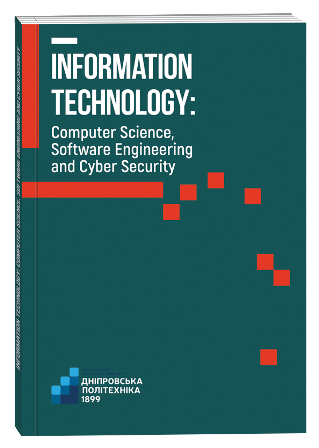ANALYSIS OF THE FEATURES OF USING FOGGY COMPUTER ENVIRONMENTS FOR BUILDING IOT INFRASTRUCTURE
DOI:
https://doi.org/10.32782/IT/2025-1-31Keywords:
IoT, foggy computing environments, decentralization, data processing, environmental monitoring, cloud infrastructure, data latency, system continuity.Abstract
The use of fog computing environments is essential for optimizing the performance of IoT infrastructures, especially in the face of a constant increase in the number of connected devices and the need to quickly process large amounts of data. The purpose of the study is to review and evaluate the features of using fog computing environments to build IoT infrastructure, which will reduce latency, improve data security, and reduce the load on central servers. Methodology. The paper uses the methodology of theoretical analysis to consider various options for building IoT systems, including centralized cloud architecture and decentralized architecture based on fog environments. Particular attention is paid to the analysis of environmental monitoring systems. The scientific novelty is to study the features of using fog environments to build decentralized IoT systems, as well as to identify key advantages, such as reducing delays and improving network stability. Conclusions. Fog computing environments significantly improve the performance of IoT infrastructure by reducing data transmission delays and offloading central servers. This increases the stability and security of the system, although it requires additional costs due to a more complex architecture. The introduction of such environments is especially useful for large-scale systems where data processing speed is critical, for example, in systems whose logic is based on the analysis of large amounts of information to react instantly to deviations from a given norm. Foggy environments were considered for implementation in an environmental monitoring system with the functionality of notifying the population of environmental threats. Implementation of such a system based on foggy environments allowed to decentralize the system, which in turn provided the system with uninterrupted operation, accelerated the execution of critical system functionality, and relieved the central server from the need to process a large number of requests from sensors.
References
H. S., V. N. A Review on Fog Computing: Architecture, Fog with IoT, Algorithms and Research Challenges. ICT Express. 2021. Vol. 7, no. 2. P. 162–176. https://doi.org/10.1016/j.icte.2021.05.004 (date of access: 12.10.2024).
Atlam H., Walters R., Wills G. Fog Computing and the Internet of Things: A Review. Big Data and Cognitive Computing. 2018. Vol. 2, no. 2. P. 10. https://doi.org/10.3390/bdcc2020010 (date of access: 12.10.2024).
Das R., Inuwa M. M. A review on Fog Computing: Issues, Characteristics, Challenges, and Potential Applications. Telematics and Informatics Reports. 2023. P. 100049. https://doi.org/10.1016/j.teler.2023.100049 (date of access: 12.10.2024).
Orchestration in Fog Computing: A Comprehensive Survey / B. Costa et al. ACM Computing Surveys. 2023. Vol. 55, no. 2. P. 1–34. https://doi.org/10.1145/3486221 (date of access: 10.11.2024).
Edge and fog computing for IoT: A survey on current research activities & future directions / M. Laroui et al. Computer Communications. 2021. https://doi.org/10.1016/j.comcom.2021.09.003 (date of access: 10.11.2024).
Tsvirkun L., Myronov Y. Challenges and Specificities of Adopting Continuous Integration within Scalable Cloud Environments. 2023 IEEE 18th International Conference on Computer Science and Information Technologies (CSIT), Lviv, Ukraine, 19–21 October 2023. 2023. https://doi.org/10.1109/csit61576.2023.10324010 (date of access: 13.11.2025).
Fog computing for next-generation Internet of Things: Fundamental, state-of-the-art and research challenges / A. Hazra et al. Computer Science Review. 2023. Vol. 48. P. 100549. https://doi.org/10.1016/j.cosrev.2023.100549 (date of access: 10.11.2024).
Singh J., Singh P., Gill S. S. Fog computing: A taxonomy, systematic review, current trends and research challenges. Journal of Parallel and Distributed Computing. 2021. Vol. 157. P. 56–85. https://doi.org/10.1016/j.jpdc.2021.06.005 (date of access: 10.11.2024).
Latency-Adjustable Cloud/Fog Computing Architecture for Time-Sensitive Environmental Monitoring in Olive Groves. A. Tsipis et al. AgriEngineering. 2020. Vol. 2, no. 1. P. 175–205. https://doi.org/10.3390/agriengineering2010011 (date of access: 10.11.2024).
Srividhya S., Sankaranarayanan S. IoT–Fog Enabled Framework for Forest Fire Management System,. Fourth World Conference on Smart Trends in Systems, Security and Sustainability : (WorldS4), London, 27–28 July 2020. 2020. P. 273–276.
Fog Computing based Automated Accident Detection and Emergency Response System using Android Smartphone / B. K. Dar et al. 4th International Conference on Emerging Technologies (ICET), Islamabad, 21–22 November 2018. 2018. P. 1–6.







